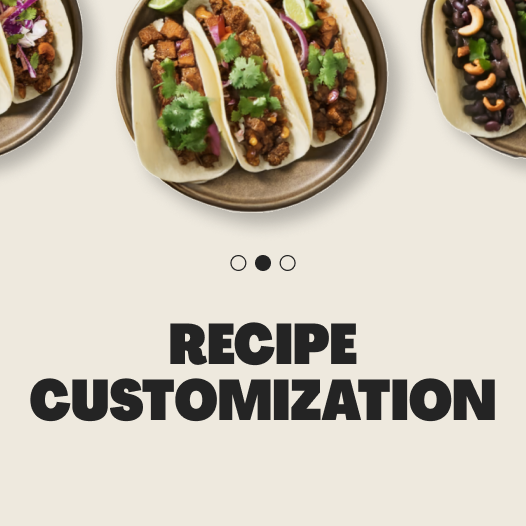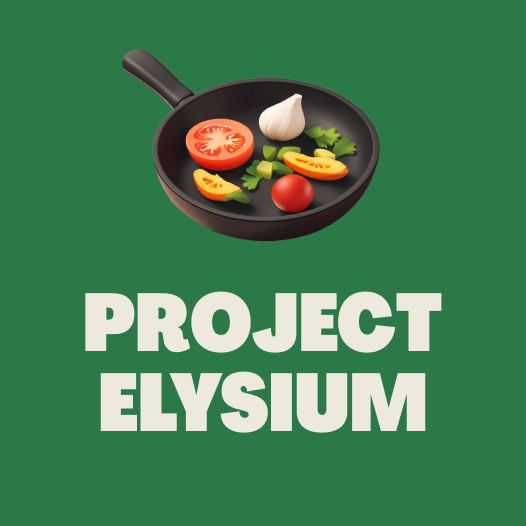World's first subscription service loyalty program
A case study on how to understand customer's motivations to drive retention
Project Overview
Since joining the Loyalty Program initiative in 2023, I have been at the forefront of crafting and executing the design strategy for HelloFresh's loyalty program. My role involved working closely with cross-functional teams, including product, business, marketing, and engineering, to conceptualize and bring to life a program aimed at enhancing customer retention and engagement. This collaborative effort was built on HelloFresh’s existing technological infrastructure, with a focus on creating a seamless and rewarding experience for our diverse global customer base. From late 2024 onwards, the loyalty program was set to undergo significant iterations, including the introduction of tiered rewards, exclusive offers, and personalized experiences, which have been meticulously planned and tested. I wanted to bring to this case the design decisions I have been taking along the way.
My Role
Lead Product Designer
Timeline
15 months (Sep 2023 - Dec 2024)
Tools
Figma, Lovable, UserTesting, Sprig
The Challenge
Loyal, long-term customers were frustrated by the lack of incentives to stay with HelloFresh. They observed that new customers received attractive offers while their own loyalty went largely unrewarded. This frustration was reflected in our business metrics; 95% of the annual discount budget was spent on new customer activation and reactivation. This strategy encouraged an unhealthy "cancel-reactivate" cycle, where customers found it more valuable to leave and return than to stay loyal. As a result, only 33% of customers agreed with the statement "HelloFresh does a good job rewarding me for my loyalty". This dissatisfaction led to a weekly cancellation rate of ~2% among the ~1.8M active customers who had already placed over 10 orders, representing a significant business loss.
Understanding Loyalty
As the design lead, I defined and executed the research strategy to solve a core business problem: while 71% of our customers identified as loyal, we discovered their connection was primarily functional, not emotional. Through over 32 user interviews I personally conducted across three markets, we found that our most tenured customers were proud advocates yet paradoxically the least likely to refer new users, challenging our core assumptions about loyalty. To translate these complex findings into a tangible strategy, I co-hosted a 3-day workshop with cross-functional leads. There, we established a new design direction focused on building a true emotional connection by delivering on the three key pillars our customers valued most: reliability, convenience, and excitement.
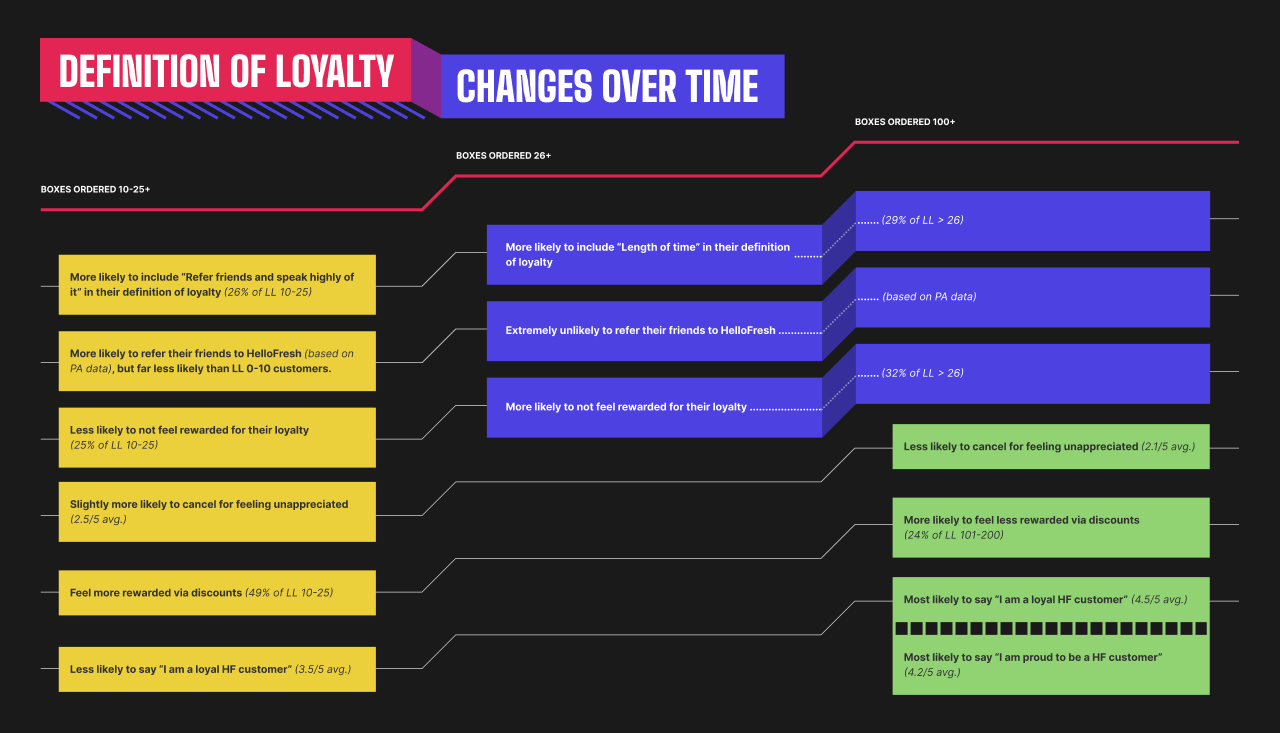
Bringing 2 concepts to the customer
Using a lean, iterative process, we defined the loyalty experience by releasing two different pre-global rollout stages in order to experiment and confirm our initial designs:
Concept tested 2 different progression models with 24 users across 2 different markets.
Released opt-in windows for beta customers to measure interest in the program—adaptive to different engagement levels
Live A/B testing on two reward structures—validating what works best
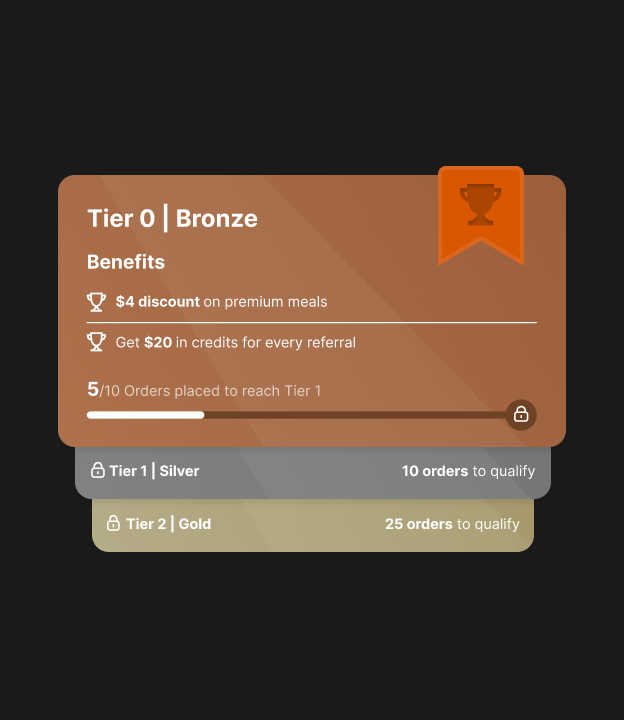
Tiered Program
-
Creates a better sense of perstige ('I'm a gold user').
-
Milestones become very far away, losing motivation to continue.
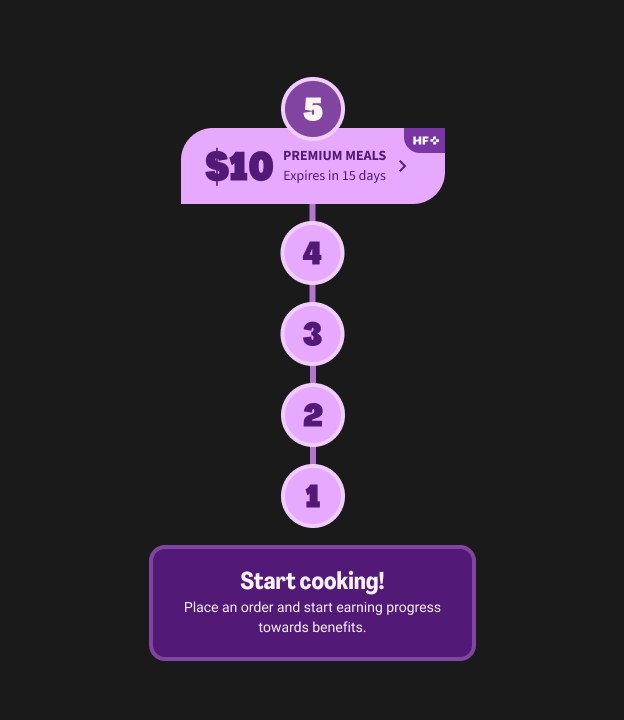
Infinite Progression
-
Better rewards & recognizes long term customers.
-
Allows for live testing rewards between customer segments
End-to-end loyalty experience
A crucial factor in the success of the HelloFresh+ loyalty program was ensuring visibility and awareness throughout the customer journey. This encourages easier participation and seamless benefit redemption. Key touch points were integrated across the Homepage, Meal Selection and Cart to increase benefits redemption, and in Cancellation flows to improve customer retention.
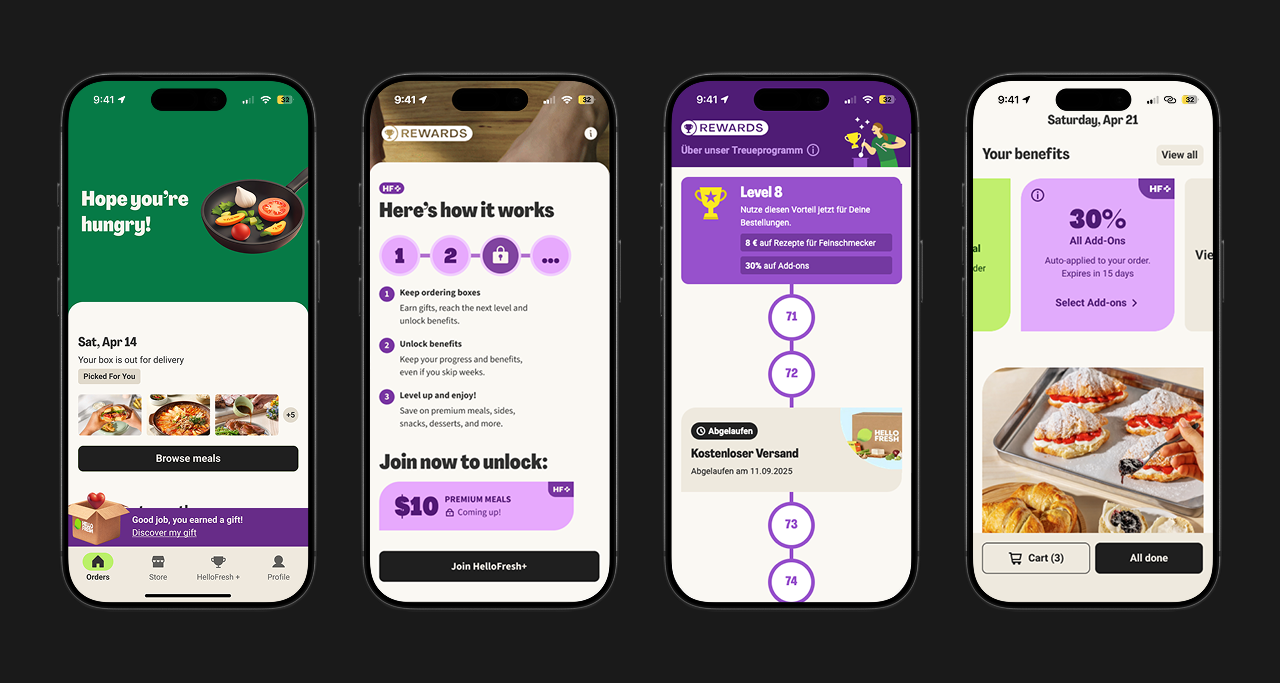
What difference was made?
Customer Adoption
42% Opt-in Rate
Achieved during the 2024 pilot phase, coupled with strong satisfaction levels measured among the program's loyal customer base.
Behavioral Impact
Reduced Churn
Beta testing confirmed the program drove higher projected order rates by significantly reducing both pause and cancellation rates among participants.
2025 Revenue
+€51 million
The program was projected to generate an estimated annual TCVA of €51 million. By the end of H1 2025, the program had already achieved 56% of this projected goal.
